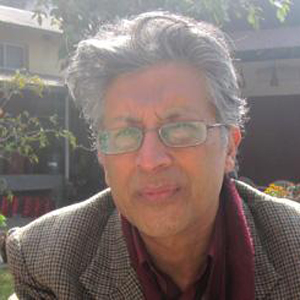Columns
The sting operations
It is very difficult to say what possible impacts the ban will have on the anti-corruption drive.
Narayan Manandhar
On April 21, the Supreme Court declared unconstitutional the sting operations that had been undertaken by the anti-corruption agency, the Commission for the Investigation of Abuse of Authority (CIAA). These operations typically involved the agency’s undercover officers offering cash bribes to public officials, a practice that came close—the Supreme Court apparently thought too close—to entrapment. The Court’s holding is a significant blow to the CIAA, which had been increasingly relying on such operations to nab bribe seekers in public service.
The court’s ruling has divided public opinion into three camps. First, this is going to be a substantial setback to Nepal’s anti-corruption drive. With no more sting operations, public officials will not fear soliciting pay-offs. The sting operations have exerted some “deterrent effect” on bribe-seeking public officials. This idea is being held, primarily, by the investigating officials and, to some degree, the civil society community engaged in the anti-corruption drive. With the court ruling, they have assumed “corruption freedom” to public officials. As substantial numbers of graft cases filed at the court are revealed through sting operations, the outright ban will have a direct bearing on the activities and performance of the CIAA, including that of the Special Court established to handle corruption cases.
Impact of the ruling
In 2017-18, 2018-19 and 2019-20, sting operations constituted 37, 90 and 88 percent respectively of the total number of graft cases filed by the CIAA. The ruling is expected to result in the dismissal of over 400 pending or ongoing bribery cases. One can fairly imagine the impact of the ruling on the performance of the CIAA.
Second, people opposed to the indiscriminate use of sting operations by the CIAA have welcomed the ruling. Perhaps most significantly, the CIAA’s increasing reliance on these sorts of sting operations exacerbated the agency’s tendency to focus overwhelmingly on petty corruption involving low-level officials and small amounts of money, against which such operations are most effective. A news magazine reported that 181 of the CIAA’s 206 bribery cases filed last year involved sting operations. It also reported that over half of those cases—99 out of 181—involved bribes of under Rs25,000 (about $200). The same magazine editorialised that “the CIAA is focused merely on the ‘easy work’ of luring low-ranked officers and making arbitrary arrests in an extra-legal manner”. The CIAA seems to have figured out that sting operations—which are, or are very close to, entrapment—are an easy way to generate short-term publicity and keep arrest and conviction numbers up. The people in this camp believe that the ruling will redirect the agency’s work from controlling petty corruptions to grand corruptions.
Sting operations also create too many possibilities for abuse, as the marked bills used in such operations can be planted or otherwise transferred to a public official in order to support a bribery charge, even if the target is innocent. In at least one case, the target of such a ruse (falsely accused of taking a Rs1,000 bribe—less than $10) tragically committed suicide before subsequently being exonerated by a court. And even when CIAA agents don’t actually plant evidence, the broad discretion that the agency wielded in determining which officials to target in sting operations raised concerns that it might use this tool to intimidate or punish political enemies. The entrapment defence constituted the basic argument here. Often, there is a blurred line between sting operations and entrapment.
There is also a third view held by former chief commissioners and former investigating officers. They argue that the court ruling has not banned sting operations altogether. It has, they say, only nullified Clause 30 of the internal regulations of the agency that allows undertaking sting operations. Clause 30 of the internal regulations of the CIAA Act-1991 states that “the commission can provide bribes to public officials demanding bribes through its own employee or the person from whom the bribe has been asked during the process of investigation once a complaint is registered against such public officials”.
Separate law
They opine that the court ruling does not affect the sting operations currently being carried out by other crime investigating agencies like the police, revenue investigation and anti-money laundering. The ruling only emphasised the need to have a separate law on anti-corruption sting operations or have it incorporated into the existing anti-corruption laws rather than making it a part of the agency's internal regulations. Some legal pundits have also criticised Clause 30 on the ground that it only penalises the bribe taker and exonerates the bribe giver when the anti-corruption law says both parties to the crime—the giver and the taker of bribes—are punishable. There is also concern over what will happen to public officials who have served prison sentences or faced punishment as a result of sting operations. Obviously, the ruling is not going to be applied retroactively.
The court is yet to issue its full verdict. At this juncture, it is very difficult to say what possible impacts the court’s ruling will have on the country’s anti-corruption drive. However, what is certain is that the ruling must have put the CIAA in an awkward position when it is relying on sting operations as a major tool to fight corruption. Hopefully, there will be introspection into sting operations, that is, taking stock of what went wrong or differentiating operations from entrapment accusations. There is also a need for extrospection—what anti-corruption authorities in other countries are doing with sting operations when it comes to fighting corruption.




 9.12°C Kathmandu
9.12°C Kathmandu















